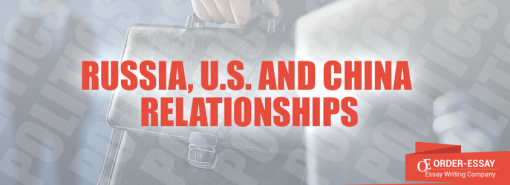
Lohr, Eric. “Modernization and Population Policy in Historical perspective”. Russian Citizenship, Volume 6, November 6th, (2013): 3-13.
The focus of the article is Russia and how a post-soviet state develops individual distinctive legal regimes, policies, migration policies, and practices of citizenship. Each soviet has become politically independent with typical rule of law. Each one of the states has self-sufficient governments with different policies and strategies in terms of administration. The author states that the Russian federation over time has invented new policies independently. The process included borrowing new ideas and conforming to the international law demands and the bilateral ties with other countries and European Union. The piece also highlights the unfolding of immigration policies and Russian citizenship caused by the ever-shifting geopolitical strategy, popular politics, and demand for labor. The reading is mainly about the key features of the history of Russian citizenship; it makes an effort to explain the issues that Russia encounters in its policies, citizenship, and practices.
The reading compares the citizenship aspects of Russia with those of other countries like Germany and France. The author states that in France there was the implementation of “jus soli” principle, which ascribed citizenship status to the foreigners born in the French homeland. He also notes that migration and citizenship policies in France were more open as they allowed for assimilation. On the contrary, Russia’s citizenship policies remained strict and did not allow for assimilation. On the other hand, Germany followed the Jus sanguinis principle, which allowed only German citizen descendants to get citizenship. The policy excluded many foreigners from the German soil. The citizenship traditions in Russia developed gradually, which took many years. According to the article, Russia’s citizenship policies seem to evolve as they incorporate some ideas and aspects from other neighboring states. They involve the collection of ideas, choices and policies, interpretation, court rulings, and other various precedents. The author notes that with countries such as the United States, it is possible and easy to trace contemporary statutes and legislation on citizenship. It is hard in relation to Russia, because the revolution that occurred in 1917 declared the previous legal policies and apparatus irrelevant and started on a completely different set of operating procedures and principles.
The citizenship policies and regulations in Russia are not present in the historical concept as the soviet era issues are so different from what the current times present. The article contends that the year 1991 marked a revolutionary break in citizenship policies. At that time, Russia embraced an open policy, which emphasized on naturalizing and attracting many people as an economy development strategy. The most powerful ruling strategy and principle that influenced citizenship policies in Russia is the attract-and-hold principle. The policy was developed due to the fact that many leaders had practical issues in ruling the large lands that were sparsely populated. This made them look for skilled foreigners and elites in order to empower their territories. The principle was popular among almost all the leaders of the various kingdoms as they competed for wealth and power. Russia had a distinctive population policy where it employed, naturalization, migration policy, and denaturalization as a strategy to increase elite, skilled and agrarian settlers. The article also states that Russia experienced mass emigration of people from Europe. During the period, there were recorded more than four million emigrants. To curb this, Russia has to raise the revenues involved. It raised the foreign passport fee and the stamp fees, which was necessary in the migration process.
In the introduction of the article, we find the weakness of the author’s argument as he highlights that the reading is about Russia’s history. However, he goes ahead to focus on the key features of the history of Russian citizenship. He focuses on Russian citizenship in an effort to analyze a basis and a platform for the issues that Russia currently encounters in relation to its policies, citizenship, and practices. The author majors only on the historic citizenship policies, but he does not clearly explain how they relate to the current citizenship policies in Russia. The author does not clarify the connection between the past citizenship policies and the current ones. Another weakness of the article is the fact that Eric Lohr compares the citizenship regulations in Russia and other countries but does not show and explain how they are related. He compares the citizenship regulations in France, England, and the United States but does not explain their relevance in understanding the Russian current population policies.
Reading the article, it is notable that the author exposes varied historical occurrences in relation to Russia’s citizenship policies and other great states. However, he fails to connect and relate them well with the current Russian citizenship policies, regulations, and law enactments. It makes the article lack a clear storyline. Evidently, the writer has written many stories, which are not related. To improve the article, the author should clearly relate the different historic occurrences and policies to the current Russian citizenship. He should explain how the past policies and enactments impacted the current rules and regulations. Applying this connection of ideas will enhance the readers’ clear understanding. It will also make the article have a flowing storyline. The author should also avoid mentioning other countries such as France whose citizenship policies are very different from the ones in Russia.











